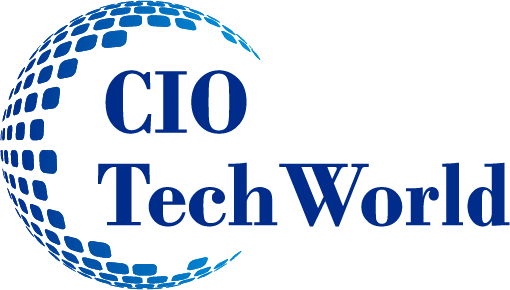In today’s rapidly advancing technological landscape, the manufacturing industry has undergone significant transformations over the years. The introduction of Industry 4.0 and the subsequent emergence of Industry 5.0 has revolutionized manufacturing processes, bringing about new opportunities and challenges. This article delves into the evolution of manufacturing technologies, examining the key differences between Industry 4.0 and Industry 5.0, their applications, and the implications for the future.
In a nutshell, Industry 4.0 refers to the fourth industrial revolution, characterized by the integration of digital technologies and automation into manufacturing processes. It encompasses a range of advanced technologies such as the Internet of Things (IoT), Big Data and Analytics, Artificial Intelligence (AI), robotics, and cyber-physical systems. These innovations have reshaped the manufacturing landscape, enabling improved productivity, efficiency, and connectivity.
On the other hand, Industry 5.0 builds upon the foundation laid by Industry 4.0 but introduces a human-centric approach to manufacturing. It emphasizes the collaboration between humans and machines, recognizing the value of human skills, creativity, and empathy in the manufacturing process. Industry 5.0 seeks to integrate advanced technologies with the unique abilities of humans to foster innovation, customization, and sustainable development.
Industry 4.0: The Fourth Industrial Revolution
Industry 4.0 represents a paradigm shift in manufacturing, driven by the convergence of physical and digital systems. It encompasses a range of technologies and concepts that have transformed traditional factory setups into smart, interconnected systems. Key components of Industry 4.0 include:
- Internet of Things (IoT)
The IoT enables the connection and communication between physical devices, machines, and systems. By collecting and sharing data in real time, IoT devices enable enhanced monitoring, control, and optimization of manufacturing processes. This connectivity facilitates intelligent decision-making and predictive maintenance, leading to improved efficiency and reduced costs.
- Big Data and Analytics
With the abundance of data generated by IoT devices and other sources, big data analytics plays a crucial role in Industry 4.0. Advanced analytics algorithms can extract valuable insights from vast datasets, enabling manufacturers to make data-driven decisions, optimize processes, and identify patterns or anomalies for continuous improvement.
- Artificial Intelligence (AI)
AI technologies, including machine learning and neural networks, empower machines to mimic human intelligence and perform complex tasks. AI systems can analyze data, recognize patterns, make predictions, and even learn from experience. In Industry 4.0, AI is leveraged to enhance automation, quality control, and predictive maintenance, leading to increased productivity and efficiency.
- Automation and Robotics
Automation and robotics have revolutionized manufacturing processes by replacing repetitive and mundane tasks with machines. Robots equipped with AI and machine vision systems can perform complex operations with high precision and speed. Automation eliminates human errors, improves productivity, and frees up human workers for more cognitive and creative tasks.
- Cyber-Physical Systems (CPS)
CPS refers to the integration of physical systems with computer-based controls and communication. By combining the physical and digital realms, CPS enables real-time monitoring, control, and optimization of manufacturing processes. It allows seamless coordination between machines, humans, and software systems, leading to improved synchronization and efficiency.
Industry 4.0 has had a profound impact on manufacturing industries, enabling streamlined operations, reduced costs, enhanced product quality, and increased flexibility. However, as technology continues to evolve, Industry 5.0 brings forth a new perspective on the future of manufacturing.
Industry 5.0: The Human-Centric Approach
While Industry 4.0 focused on automation and digitalization, Industry 5.0 seeks to strike a balance between technological advancements and the unique capabilities of humans. It recognizes that human skills, creativity, and empathy are essential for driving innovation, customization, and sustainability in manufacturing. Industry 5.0 aims to integrate advanced technologies with human expertise to create harmonious and collaborative work environments.
In Industry 5.0, machines are not intended to replace humans but rather augment their capabilities. By leveraging technologies such as AI, robotics, and augmented reality, Industry 5.0 empowers humans to work alongside machines, combining their cognitive abilities with the efficiency and precision of technology. This approach enables the development of innovative solutions, customization of products, and adaptive responses to changing market demands.
Industry 5.0 places a strong emphasis on empathy and creativity, recognizing that these uniquely human qualities play a crucial role in problem-solving, design thinking, and customer satisfaction. By involving humans in decision-making processes and encouraging their active participation, manufacturing can become more agile, responsive, and socially responsible.
Key Differences Between Industry 4.0 and Industry 5.0
The shift from Industry 4.0 to Industry 5.0 represents a significant transformation in the manufacturing landscape. Here are some key differences between these two paradigms:
- The Shift from Automation to Augmentation
Industry 4.0 is heavily focused on automation, aiming to eliminate human intervention from manufacturing processes. In contrast, Industry 5.0 recognizes the importance of human skills and aims to augment human capabilities with advanced technologies. It seeks to strike a balance between automation and human intervention, leveraging technology to enhance productivity, creativity, and problem-solving.
- Emphasis on Human Skills and Creativity
While Industry 4.0 emphasized technological advancements, Industry 5.0 acknowledges the irreplaceable value of human skills, creativity, and emotional intelligence. Machines can perform repetitive tasks and process vast amounts of data, but humans excel at complex decision-making, critical thinking, and innovation. Industry 5.0 encourages the cultivation of these skills and fosters an environment where humans and machines collaborate to achieve optimal outcomes.
- Role of Technology in Enhancing Human Capabilities
In Industry 4.0, humans were seen as operators overseeing automated systems. However, in Industry 5.0, technology is seen as a means to enhance human capabilities rather than replace them. Advanced technologies such as AI, robotics, and augmented reality can empower humans to perform tasks more efficiently, make informed decisions, and unleash their creative potential. The integration of technology and human skills leads to a synergistic partnership, driving manufacturing advancements.
- Transformation of Traditional Job Roles
As Industry 5.0 emerges, the nature of job roles in manufacturing undergoes a significant transformation. While Industry 4.0 led to the automation of many manual tasks, Industry 5.0 requires a shift towards roles that leverage human skills, creativity, and adaptability. Traditional job roles may evolve or be replaced by new positions that require a combination of technological proficiency and cognitive abilities. Workers will need to upskill and reskill to thrive in this new manufacturing era.
Applications and Examples of Industry 4.0 and Industry 5.0
The concepts of Industry 4.0 and Industry 5.0 find practical applications across various manufacturing industries. Here are some examples:
- Use cases in Manufacturing Industries
In the automotive industry, Industry 4.0 technologies enable the creation of smart factories where IoT sensors monitor production lines, AI algorithms optimize supply chain management, and robotics automate assembly processes. Industry 5.0 takes this further by integrating human expertise with advanced technologies to enable customization, innovation, and high-quality craftsmanship.
In the pharmaceutical industry, Industry 4.0 enables the implementation of smart manufacturing processes that ensure quality control, traceability, and real-time monitoring of drug production. Industry 5.0 adds the human touch, allowing pharmacists and researchers to collaborate with AI systems to develop personalized medicines and address complex health challenges.
The journey from Industry 4.0 to Industry 5.0 represents a significant shift in manufacturing paradigms. While Industry 4.0 focused on automation and digitalization, Industry 5.0 embraces a human-centric approach that combines the unique abilities of humans with the efficiency and precision of technology. By fostering collaboration, customization, and sustainable innovation, Industry 5.0 aims to shape a future where humans and machines coexist harmoniously to drive manufacturing advancements.








